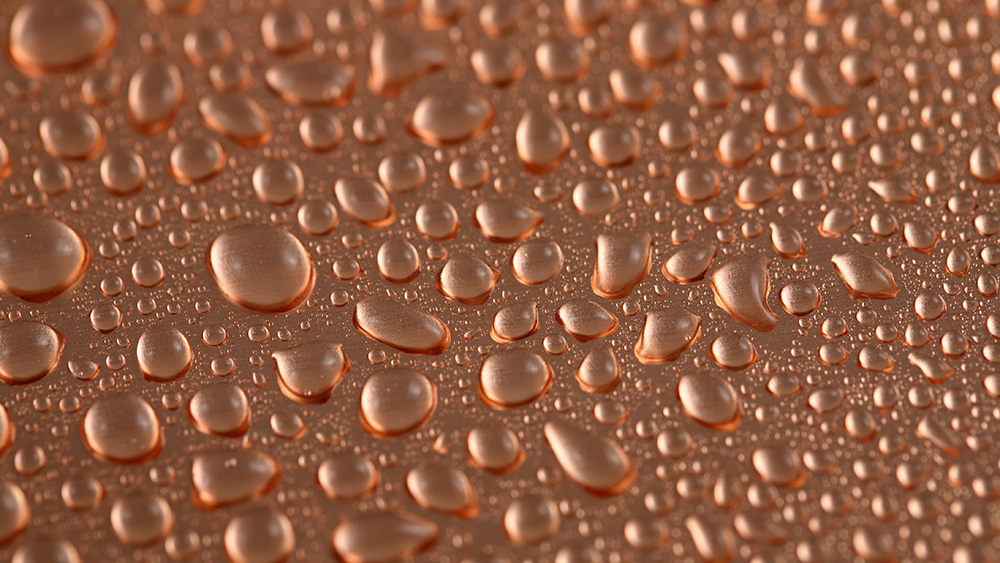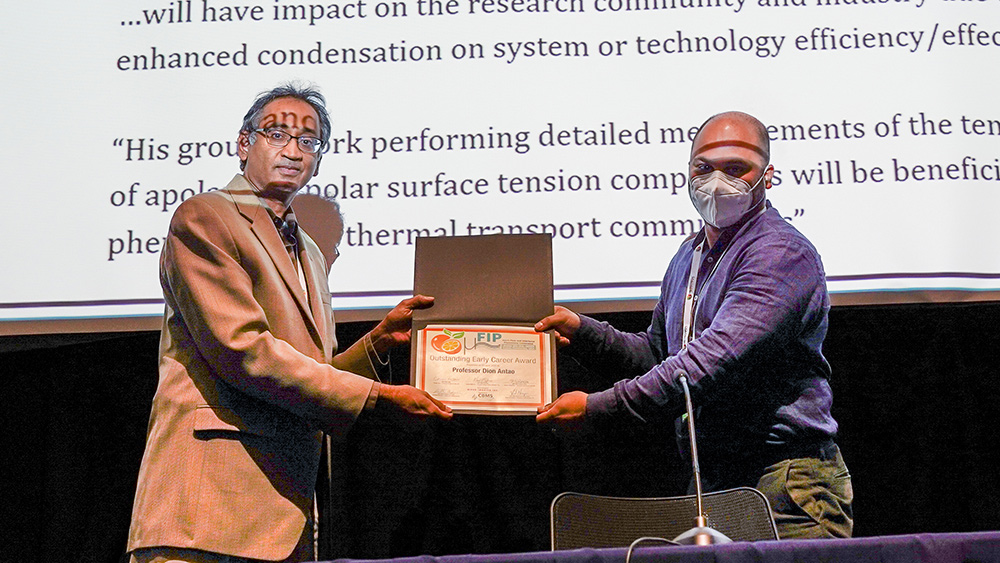
Researchers at Texas A&M University have uncovered a solution to a decades-old mystery surrounding the failure of certain ultra-thin coatings during the phase-change heat transfer process.
Led by Dr. Dion Antao, a team from the J. Mike Walker '66 Department of Mechanical Engineering has not only helped illuminate the previously elusive challenges facing silane self-assembled monolayers (SAMs) during the phase-change heat transfer but also developed enhanced versions of the coatings offering exponentially improved performance.
The research has the potential to provide significant improvements to the efficiency of electric power generation, resulting in lower carbon emissions for fossil fuel-based technology and lower energy production costs for renewable energy production methods.
Improved silane SAMs can affect the performance of heat exchanger components of refrigeration or air conditioning technology and devices, said Antao, assistant professor and J. Mike Walker '66 Faculty Fellow II. Benefits could also extend to two-phase thermal management devices used to cool electronics or electrical devices in electric-based power generation or conversion technologies.
The concept of enhanced dropwise condensation came about in the 1930s and continued to be refined and further explored through the 1950s when researchers focused on ultra-thin silane SAM coatings. The silane SAMs, however, are known to degrade within minutes of operation during water vapor condensation — a failure that researchers have struggled to determine and improve upon for decades.
“To our knowledge, our work was the first in the field of thin coatings-assisted heat transfer enhancement to experimentally validate the coating failure mechanism and propose a corresponding method to mitigate coating degradation," said Dr. Ruisong Wang, a former Texas A&M mechanical engineering doctoral student and a member of the research team.
Wang said the team first identified the bonding mechanism between the coating material and its underlying material, or substrate. After finding an explanation for why these silane SAMs fail during water vaper condensation heat transfer, the researchers then applied that knowledge to extend the lifetime of the coatings on silicon to at least 500 hours using oxygen plasma to enrich the surface. With that success, Antao and his team took those coating concepts and applied them to copper substrates.
"Copper as a substrate is much more widely used as a heat exchanger material than silicon, but it is also more challenging to create robust silane SAM coatings on copper or other metal substrates," Antao said. "Our silane SAM coatings on copper that use our proposed coating integration and synthesis procedures were able to survive without failure for more than 350 hours, compared to coatings integrated on copper — or other metals — using the more common procedure, which fails within 30 minutes."

The results of their testing showed the coatings on copper to have vastly improved condensation heat transfer characteristics, according to the team's heat transfer measurements throughout the research process.
The research was published in the American Chemical Society's Applied Materials & Interfaces journal and the International Journal of Heat and Mass Transfer, documenting their work to first determine why the coatings failed and how they successfully developed more robust silane SAM coatings.
"Our coating methods and procedures, developed based on our validated silane SAM coating 'condensation-mediated degradation' hypotheses, are the key difference," Antao said. "Additionally, our condensation testing system is extremely well controlled. We have no impurities — like non-condensable gases such as air — in the test system during water vapor condensation. This allows us to be confident in our proposed mechanism and validated hypothesis."
As the research continues, Antao said his team will explore different types of coatings and their impacts on the environment and human health. They are specifically seeking alternatives to fluorinated compounds, which have been connected to harmful health effects.
"We have been exploring alternate nonfluorinated low surface energy coatings as robust dropwise promoters, and this is an active area of our current and future research," Antao said. "The potential for impact of robust low surface energy coatings on enhanced condensation heat transfer — with applications ranging from power generation to water purification/recovery — is huge. We wish to leverage our knowledge of making and testing robust nonfluorinated and fluorinated low surface energy coatings to achieve such an impact on liquid-vapor phase-change technologies."
Antao was honored at the 2022 Micro Flow and Interfacial Phenomena conference with the Outstanding Early Career Award. The honor recognized this research, as well as other ongoing work of Antao and his team.